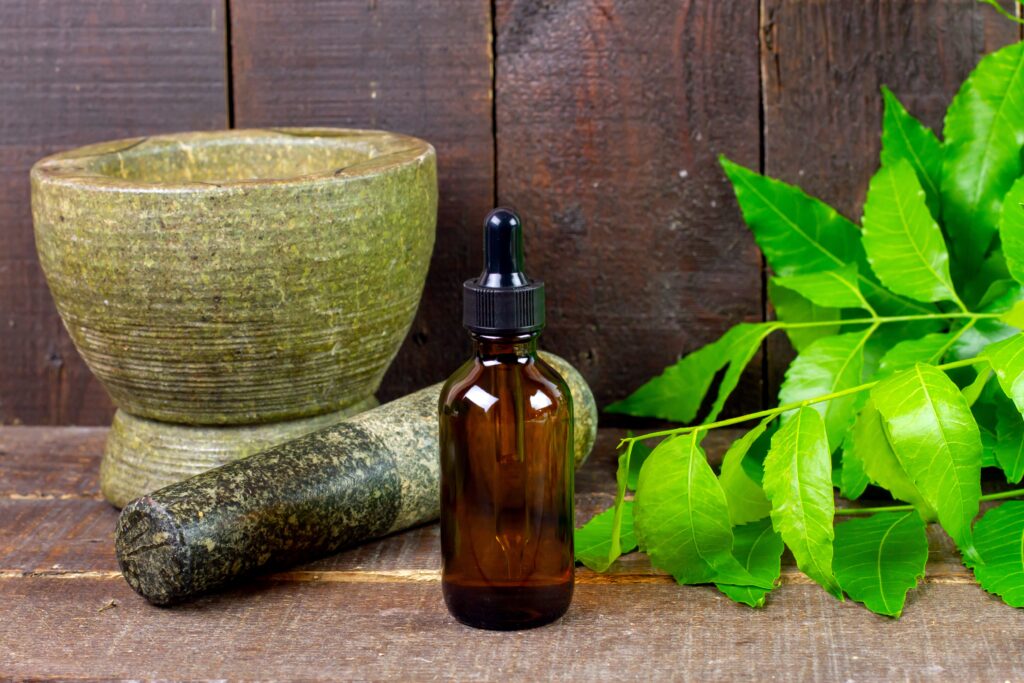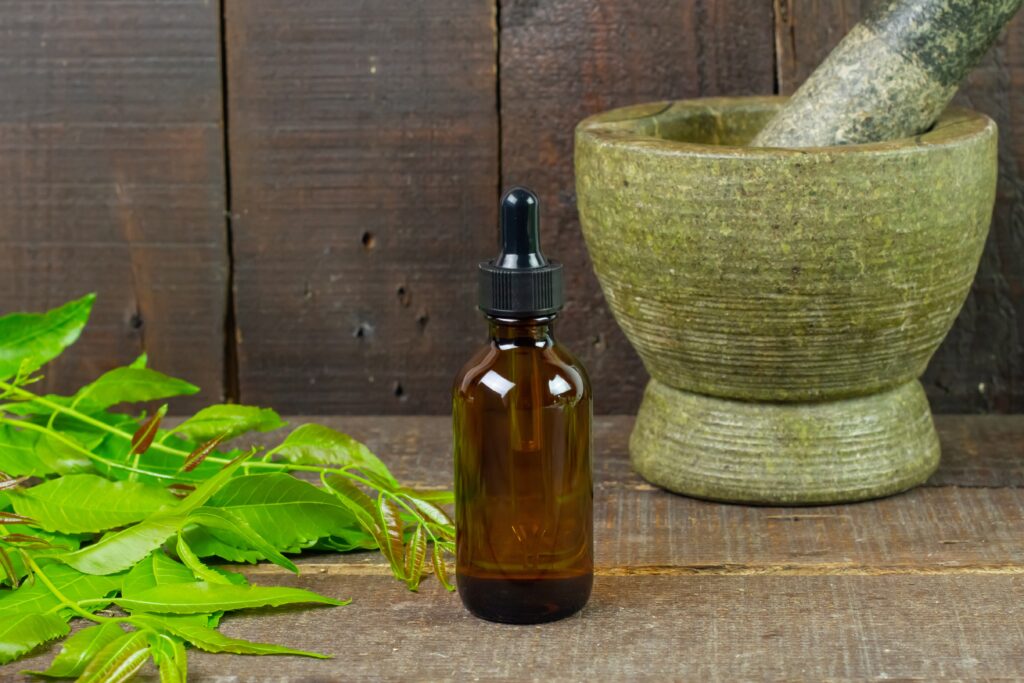Ayurveda places much emphasis on the idea of fire or Agni. One of the most important aspects of general health is the body’s Agni strength. As opposed to this, Aama or Ama is a toxic, disease-causing material that develops due to weakened Agni and ultimately destroys Agni. As a result, Agni dysfunction and Aama production frequently engage in a self-reinforcing cycle.
Sadly, the buildup of Aama is exceedingly harmful to human health; it can cause a wide range of disturbances and contributes to a wide range of illnesses.

Consequently, realizing Aama as the opposite of Agni and understanding what it is specifically, how to spot it, how to get rid of it from the body, and how to ignite Agni in its stead can be a very beneficial path to achieving optimum health.
Definition – What Does Aama Mean?
Aama is a Sanskrit term that can be translated literally to mean “unripe,” “uncooked,” “raw,” “immature,” or “undigested.” Essentially, it is a type of unmetabolized waste that the body cannot process. Therefore, as long as it is effectively eliminated, creating minuscule quantities of Aama is a typical byproduct of digestion. However, Aama becomes extremely harmful when not periodically cleansed and eradicated. It is believed that Aama is the root of all disease, and the Sanskrit word for disease, Aamaya, literally translates as “that which is born out of Aama.”
The characteristics of Aama are directly opposed to those of Agni; hence, the relationship between Aama and the illness makes perfect sense. And keep in mind that good health requires robust Agni to be maintained. In other words, our health suffers when Agni is weakened, and Aama builds up, reinforcing the two conditions.
According to traditional India’s ayurvedic medical system, some diseases are said to be brought on by leftovers or other unmetabolized waste. Ayurveda claims that Aama inhibits the body’s organs and pathways, making it impossible for the body to absorb vital nutrients.
Honestly, How Bad Is It?
Aama is relatively simple to expel from the digestive tract, but it is considerably more challenging if it has migrated to deeper tissues.
When it builds up, Aama naturally clogs the body’s pathways (Srotamsi) and impairs tissue feeding. In addition, Aama can interfere with physiological functions at the cellular level, which is also problematic. Aama binds and clogs individual cell membranes as it seeps into the deeper tissues, impairing cellular communication and reducing the strength of the immunological response. As a result, there is eventually a loss of cognition at the cellular level, which can result in much more catastrophic illnesses like cancer or autoimmune disorders.
Aama Warning Signs And Symptoms
Generalized symptoms of Aama in the body include:
- Blocked channels (may cause symptoms like fibrocystic changes, constipation, lymph congestion, sinus congestion, etc.)
- Fatigue
- Heaviness
- Vata flow that is not (There are many ways this might manifest in the body, but some examples include excess upward flowing energy producing heartburn or excess downward moving energy producing diarrhea.)
- Indigestion
- Stagnation
- Unusual flavor, muted taste, or weak hunger
- Sexual scum
- Perplexity in the mind
- Feeling unclean
Depending on where Aama is located in the body, it can produce more specific signs and symptoms like a thick coating on the tongue, various types of congestion, weakness, dull eyes, skin blemishes, fevers, excess weight, poor circulation, edema, and swelling, stiffness or soreness at the roots of the hair, inhibited movement, or generalized aches and pains. In addition, Aama commonly results in alterations in taste perception, lack of appetite, indigestion, malabsorption, vitamin and mineral deficiencies, bloating, gas, constipation, diarrhea, sticky stools, or itching at the anus in the digestive tract. In addition, Aama is frequently to blame for having bad-smelling mucus, urine, feces, and bad breath.
Aama causes a marked loss of mental and emotional vigor, lack of excitement, low self-esteem, anxiety, worry, sadness, dread of the unknown, clouded thinking, and confusion.
The following modern disorders are caused directly by Aama buildup.
- Atherosclerosis
- An increase in Candida albicans
- High blood sugar
- Urea in the blood
- Diabetes with late onset
- Gout
- Various forms of depression
- Bile stains
- Rheumatoid element
- Renal stones
- Elevated igg-globulin E
- Elevated liver enzyme levels
- Helicopylori bacterium
- Glaucoma
- Leukocytosis
- Fevers
- Overly high red blood cell count
- Bacterial illnesses
- Overly high platelet count
- Tumors
The Reasons For Aama
Although there are many causes for Aama to start building up in the body, poor Agni is always a factor. Further complicating matters, Aama affects Agni, making it often difficult to determine which originated first. It makes no difference. Agni-disrupting habits are frequently connected to the development of Aama. Similar to how habits that cause Aama to form would irritate Agni. Here are some instances of these behaviors.
One of the initial measures in Ayurveda treatment is always to eliminate the source of an imbalance. Even though the precise cause of your condition might not be immediately apparent, an Ayurvedic doctor can help you find and change any areas of your life that might endanger your health. The following advice will be beneficial in the interim.
General Support For Eliminating & Digestion Of Aama
Thankfully, there are several strategies for encouraging the body to break down and eliminate Aama. The following measures assist the body’s physiological, natural detoxification process. Ultimately, they support the digestive system, enhance tissue nutrient absorption, and aid in Aama removal through urine, feces, and sweat.
Yoga
Yoga is also helpful because it activates prana throughout the body, warms the body, typically causes a light sweat, aids in stretching and wringing out tissues that might be harboring accumulated Aama, and relaxes the mind. The most balancing type of yoga may differ from person to person, but even just 10 to 20 minutes a day can make a significant difference. The Vata, Pitta, and Kapha dovetail-specific recommended yoga poses are below.
Sweating
Aama can be more easily eliminated by warming up the body and causing a little sweat because it thins, loses its hold on the tissues, and moves into the digestive tract. Therefore, sweating can be incredibly beneficial, whether with a light steam bath, a sauna, or proper exercise. However, if pitta is excessive, use caution because excessive heat and perspiration may unintentionally worsen pitta and cause further imbalances.
Herbal Remedies
The bitter and astringent tastes are potent because the bitter taste dries and drains Aama while the pungent taste destroys and digests it. This is a common flavor combination in herbs and formulas widely used to digest Aama. Herbal support is frequently indicated when the Agni is strong enough to produce an appetite but not enough to entirely digest the food, forming Aama.
Unexpectedly many herbs are revered in Ayurveda for their capacity to break down and eliminate Aama. They frequently use the herbs given before meals to stimulate the digestive system but in much higher dosages. 4 Thus, the herbs themselves act as a fuel source to stoke the fire of the compromised digestive system. Each person’s unique situation will determine the best combination of Aama-reducing herbs, which a trained professional should decide. Herbs that digest Aama also frequently tend to be rather hot, which might exacerbate the issue in excessive pitta or severe inflammatory disorders (such as ulcers). It is also important to remember that many of these herbs are typical kitchen spices, such as fresh and black pepper, dried ginger, mustard seed, cinnamon, nutmeg, garlic, cumin, fennel, and coriander. The vata, pitta, and Kapha sections contain some specific Aama-digesting herbs.
Taking A Sunbath
Appropriate amounts of sunlight increase lightness and stoke Agni and are particularly beneficial for some eczema, arthritis, depression, psoriasis, and water retention. While we must be careful about when and how long our skin is exposed to direct sunlight, this is especially important for people with fair skin. For some, just 10 minutes of morning or evening sunlight is sufficient. For others, 40 minutes is no problem.
Getting Prana
The subtle essence of the life force sustains us is prana, the essential breath. Every cell and tissue in our bodies is filled with it. The breath sustains it and energizes it. Therefore, Prana ingestion is beneficial for breaking down and eliminating Aama. Our tissues can be bathed in fresh prana in several efficient ways. These techniques are particularly beneficial for conditions like anxiety, fear, asthma, bronchitis, emphysema, the nervous system as a whole, and the mind. The simplest technique is to spend time in nature and either go for a leisurely, delightful trek or take several deep, quiet breaths into the abdomen.
Another effective method of supplying the mind-body organism with prana is pranayama, which can be done indoors or outdoors (so long as it is not overly windy). The vata, pitta, and Kapha sections below detail specific pranayama techniques. Beginner techniques like Full Yogic Breath, Ujjayi (Breath of Victory), and Nadi Shodhana are suitable for most people (Alternate Nostril Breathing).
Detoxification Methods
Extracting Aama from the deep tissues with a deeper cleansing routine is frequently necessary. This introduction to Ayurvedic cleansing describes several various cleansing methods. Some are brief and uncomplicated. However, some should only be performed with the assistance of a skilled professional since they are longer, more complicated, have a deeper impact, and require more time.
Toxins, excess Vata, pitta, and Kapha, for instance, are released from the deep tissues, transported to the digestive tract, and then eliminated from the body during panchakarma, Ayurveda’s characteristic cleanse. Therefore, despite the wide range of possibilities, it’s crucial to pick a cleansing regimen you feel comfortable managing and gather sufficient support for your procedure. Otherwise, you can have trouble, and your efforts might not have the impact you had hoped for. A qualified Ayurvedic practitioner can help you tailor your strategy to effectively treat your issues and imbalances.
Fasting
Fasting can be highly effective in getting rid of Aama, but it can also be very upsetting to some constitutions, so it should be done carefully. Short fasts with liquid soups for some sustenance work well for Vata types most of the time. Juice fasts are usually tolerated by Pitta types, especially in the spring and summer. Contrarily, Kapha types typically benefit from a quick water-only fast despite their propensity to avoid doing so. 1 In any event, drinking hot water or teas flavored with spices like cardamom, cinnamon, and black pepper will help to flush out toxins and satisfy the appetite. 1 All three doshas respond favorably to mono-diet fasts in which kitchari is consumed throughout the fast.

So, A balanced diet, regular exercise, meditation, and a healthy lifestyle can help avoid Aama. Ayurveda practitioners may suggest engaging in physical activity, such as yoga asana practice, to release Aama once it has accumulated in the body. Fasting, detox diets, and cleansing teas are also advised. All of these techniques aim to increase Agni, the internal “fire” that aids in digestion and metabolism.
Frequently Asked Questions (FAQs)
The Sanskrit word Aama, which refers to something lacking, has several interpretations. The word can specifically mean “raw,” “undigested,” “unannealed,” and “unripe.” It is also the etymological source of the phrase “born out of aama,” which describes the sickness aamaya.
Āma (आम):— The ayurvedic concept of Aama is particularly unique. Aam a is an immature Rasa caused by weakened agni that can result in pathogenic disorders. In actuality, it is an endotoxin created by the inadequate digestion or conversion of edibles or metabolites as a result of decreased agni at the appropriate levels. Aama presents its distinctive symptoms and collaborates with dosha and dusya in the pathogenesis process (samprapti).
